Indoor Comfort Heating Cooling
Michigan ,
 United States
(+1) 7346659860
Fax : 7346653836
http://www.indoorcomfort.net
United States
(+1) 7346659860
Fax : 7346653836
http://www.indoorcomfort.net
Indoor Comfort Heating Cooling - Ann Arbor
Indoor Comfort is a customer focused heating and air-conditioning organization which was initially started in 1951. Located in Ann Arbor, MI, we employ well-trained folks whose objective is to make our firm the number one service company in Washtenaw County region.
Our firm specializes in designing, technology, and installing complete comfort systems for owners of existing homes and buildings merely like yours. We take unique pride in the craftsmen we train and employ--a truth you'll see instantly in the attitude and integrity they bring to your job website. Our whole organization works hard to make your experience with us hassle-free and enjoyable. If we make a mistake, we will do everything in our energy to correct it to your satisfaction.
From the professionalism of our sales technicians, to the dedication of our field personnel, we are focused on delivering you the number one. We take our responsibility very seriously when you put your trust in us. We pledge to constantly tell you up front what your cost is to complete your job properly. We make it a point to go over any details or limitations of the proposed system that will affect your enjoyment of the end result. You are told what to anticipate up front. We back this strategy with our exclusive written guarantee when selecting Indoor Comfort to contract your job:
“If at any time during the initial year of installation, you're not 100% pleased with the performance of the equipment, our service or even our folks, we'll, within 30 days of the request, remove the system and cheerfully refund the whole amount of the contract.”
Compare our guarantee with the limitations, fine print and exclusions other firms tend to utilize to back their work today.
Others will guarantee only the functionality of the equipment--not your satisfaction with all the procedures or that the completed job lives up to your expectations. That is why Indoor Comfort continues growing with more pleased shoppers every year. Give us a call for your service demands and see what you've been lost.
| Business Operation Hours | ||
| Monday |
9:00 AM to 5:00 PM |
|
| Tuesday |
9:00 AM to
5:00 PM
| |
| Wednesday |
9:00 AM to 5:00 PM |
|
| Thursday |
9:00 AM to 5:00 PM |
|
| Friday |
9:00 AM to 5:00 PM |
|
| Saturday |
Closed |
|
| Sunday |
Closed |
|
Other HVAC Services : Water Heaters, Indoor Air Quality,
Service Type : Yes, this business serves customers at their Location
 HVAC Services
HVAC Services
Selecting a New Water Heater: Summary: This fact sheet will help you select an energy-efficient water heater for your home. Many homeowners wait until their water heater fails before shopping for a replacement. Because they are in a hurry to regain their hot water supply, they are often unable to take the time to shop for the most energy-efficient unit for their specific needs. This is unfortunate because the cost of purchasing and operating a water heater can vary greatly, depending on the type, brand, and model selected and on the quality of the installation. To avoid this scenario, you might want to do some research now before you are faced with an emergency purchase. Familiarize yourself today with the options that will allow you to make an informed decision when the need to buy a new water heater arises.
Types of Water Heaters Available: Within the last few years, a variety of water heaters have become available to consumers. The following types of water heaters are now on the market: conventional storage, demand, heat pump, tankless coil, indirect, and solar. It is also possible to purchase water heaters that can be connected to your home's space-heating system.
Storage Water Heaters: A variety of fuel options are available for conventional storage water heaters electricity, natural gas, oil, and propane. Ranging in size from 20 to 80 gallons (75.7 to 302.8 liters), storage water heaters remain the most popular type for residential heating needs in the United States. A storage heater operates by releasing hot water from the top of the tank when the hot water tap is turned on. To replace that hot water, cold water enters the bottom of the tank, ensuring that the tank is always full.
Because the water is constantly heated in the tank, energy can be wasted even when no faucet is on. This is called standby heat loss. Newer, more energy-efficient storage models can significantly reduce the amount of standby heat loss, making them much less expensive to operate. To determine the most energy-efficient model, consult the EnergyGuide label required on storage water heaters. EnergyGuide labels indicate either the annual estimated cost of operating the system or energy efficiency ratings.
Demand Water Heaters: It is possible to completely eliminate standby heat losses from the tank and reduce energy consumption 20% to 30% with demand (or instantaneous) water heaters, which do not have storage tanks. Cold water travels through a pipe into the unit, and either a gas burner or an electric element heats the water only when needed. With these systems, you never run out of hot water.
But there is one potential drawback with demand water heaters -- limited flow rate. Typically, demand heaters provide hot water at a rate of 2 to 4 gallons (7.6 to 15.2 liters) per minute. This flow rate might suffice if your household does not use hot water at more than one location at the same time (e.g., showering and doing laundry simultaneously). To meet hot water demand when multiple faucets are being used, demand heaters can be installed in parallel sequence. Although gas-fired demand heaters tend to have higher flow rates than electric ones, they can waste energy even when no water is being heated if their pilot lights stay on. However, the amount of energy consumed by a pilot light is quite small.
Heat Pump Water Heaters: Heat pump water heaters use electricity to move heat from one place to another instead of generating heat directly. To heat water for homes, heat pump water heaters work like refrigerators in reverse. Heat pump water heaters can be purchased as integral units with built-in water storage tanks or as add-ons that can be retrofitted to an existing water heater tank. These systems have a high initial cost. They also require installation in locations that remain in the 40 degree to 90 degree F (4.4 degrees to 32.2 degrees C) range year-round and contain at least 1000 cubic feet (28.3 cubic meters) of air space around the water heaters. To operate most efficiently, they should be placed in areas having excess heat, such as furnace rooms. They will not work well in a cold space.
Tankless Coil and Indirect Water Heaters: A home's space-heating system can also be used to heat water. Two types of water heaters that use this system are tankless coil and indirect. No separate storage tank is needed in the tankless coil water heater because water is heated directly inside the boiler in a hydronic (i.e., hot water) heating system. The water flows through a heat exchanger in the boiler whenever a hot water faucet is turned on. During colder months, the tankless coil works well because the heating system is used regularly.
However, the system is less efficient during warmer months and in warmer climates when the boiler is used less frequently. A separate storage tank is required with an indirect water heater. Like the tankless coil, the indirect water heater circulates water through a heat exchanger in the boiler. But this heated water then flows to an insulated storage tank. Because the boiler does not need to operate frequently, this system is more efficient than the tankless coil. In fact, when an indirect water heater is used with a highly efficient boiler, the combination may provide one of the least expensive methods of water heating.
 Additional Information
Additional Information
Through specially designed systems, energy from the sun can be used to heat water for your home. Depending on climate and water use, a properly designed, installed, and maintained solar water heater can meet from half to nearly all of a home's hot water demand. Two features, a collector and a storage tank, characterize most solar water heaters. Beyond these common features, solar water-heating systems can vary significantly in design. The various system designs can be classified as passive or active and as direct (also called open loop) or indirect (also called closed loop).
Passive systems operate without pumps and controls and can be more reliable, more durable, easier to maintain, longer lasting, and less expensive to operate than active systems. Active solar water heaters incorporate pumps and controls to move heat-transfer fluids from the collectors to the storage tanks. Both active and passive solar water-heating systems often require conventional water heaters as backups, or the solar systems function as preheaters for the conventional units.
A direct solar water-heating system circulates household water through collectors and is not appropriate in climates in which freezing temperatures occur. An indirect system should not experience problems with freezing because the fluid in the collectors is usually a form of antifreeze. If you are considering purchasing a solar water-heating system, you may want to compare products from different manufacturers.
 Languages Spoken
Languages Spoken
English
 Payment Options
Payment Options
 Visa
Visa Master Card
Master Card Cash
Cash Check
Check

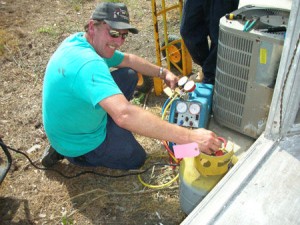
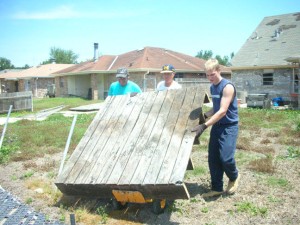
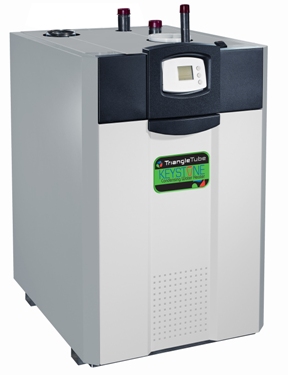
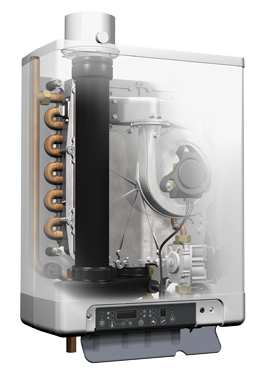


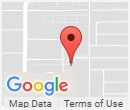
 Year Established
Year Established


Write a review for Indoor Comfort Heating Cooling
* Review Title
* Review